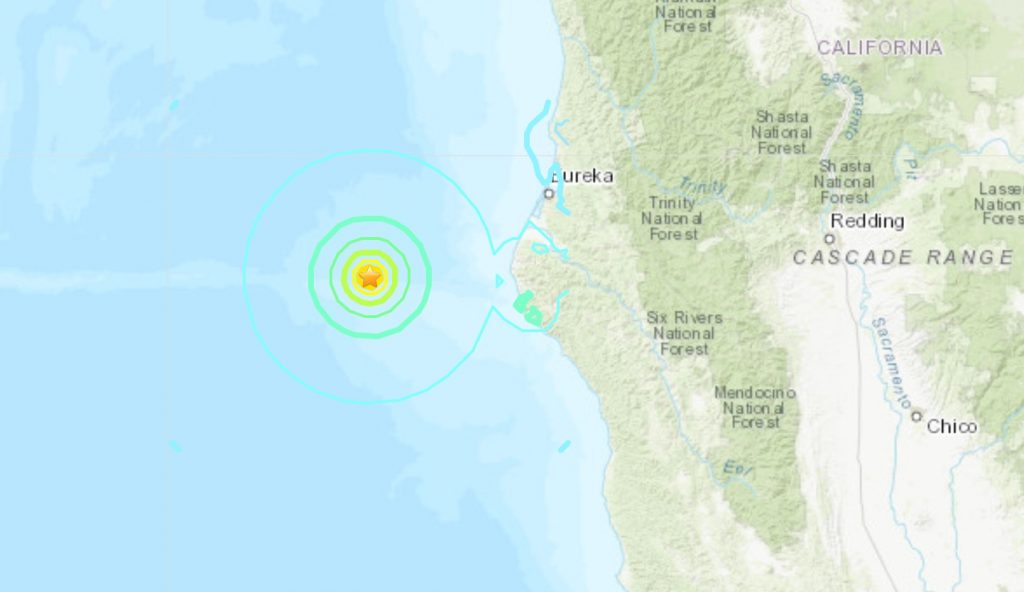A series of 8 earthquakes hit the Cascadia Subduction Zone and the Mendocino Fracture zone on March 8, 2020.
The biggest quake of the swarm was a M5.8 followed by a M4.9 three hours later.
The very shallow (2.2km or 1.4 miles deep) M5.8 earthquake hit the Mendocino fracture zone on March 8 2020 at around 8pm local time (2:59 UTC). The second largest tremor, a M4.9 quake hit around 3 hours later almost at the same spot.
Below you will find the 8 earthquakes of the series:
The M5.8 earthquake has been reported more than 2,600 times on the USGS website, while the M4.9 was felt by more than 300 residents.
This is due to the very shallow epicenters.
However, no tsunami warnings have been released since there was very little vertical movement and thus a little tsunami risk.

The Mendocino Fracture Zone starts off the coast of Cape Mendocino in far northern California.
The fracture zone runs westward from a triple junction with the San Andreas Fault and the Cascadia subduction zone to the southern end of the Gorda Ridge.
The Mendocino is also a transform fault due to its active fault segment east of the Gorda Ridge knoan as the Mendocino Fault or Mendocino fault zone among geologists.
At seismically active intersection called the Mendocino Triple Junction, the northern Cascadia Subduction Zone is linked to the southern San Andreas Fault system.
It has been recently shown that the Cascadia and the San Andreas have way more interaction than previously thought. A new study has indeed demonstrated that a quake on the Cascadia Subduction Zone could trigger a similar shaker on the San Andreas fault to the south, thus inducing a cataclysmic seismic event along the U.S. West Coast.
So, yes, a major quake from the offshore Cascadia fault zone could trigger California’s infamous San Andreas Fault. And when I see strong earthquakes hitting the area I just feel it’s time to remind everybody about the imminent disaster. Be prepared!
No comments:
Post a Comment